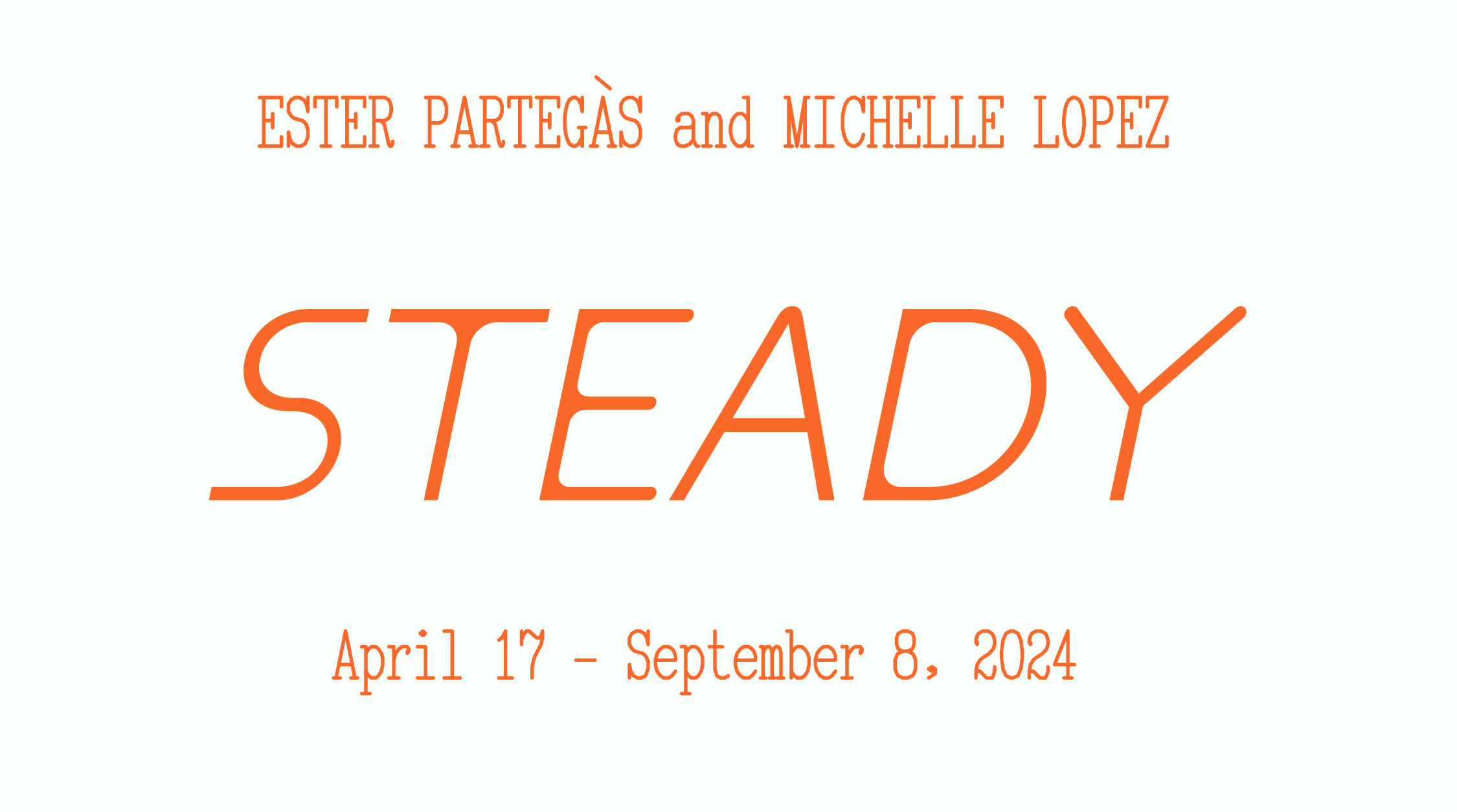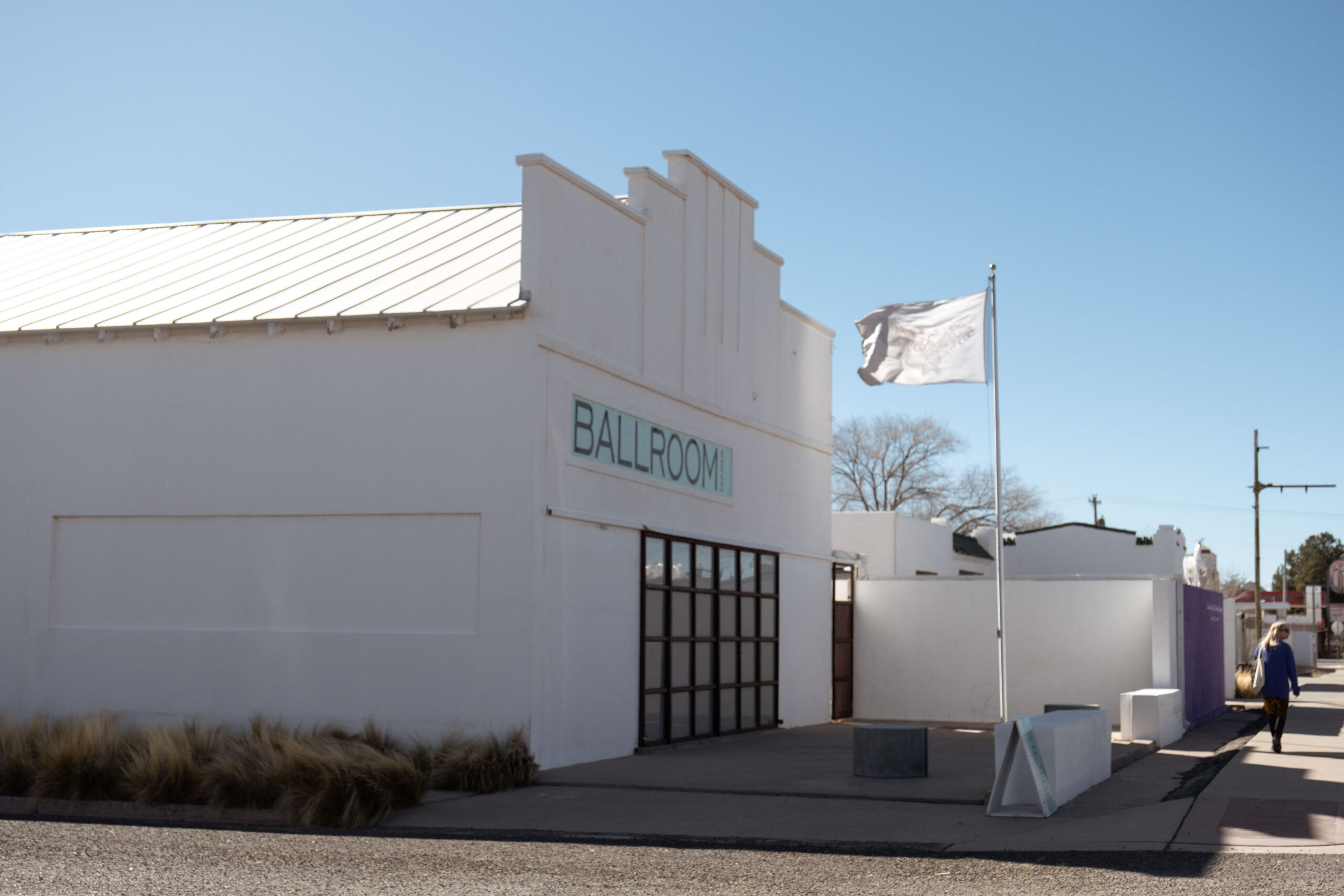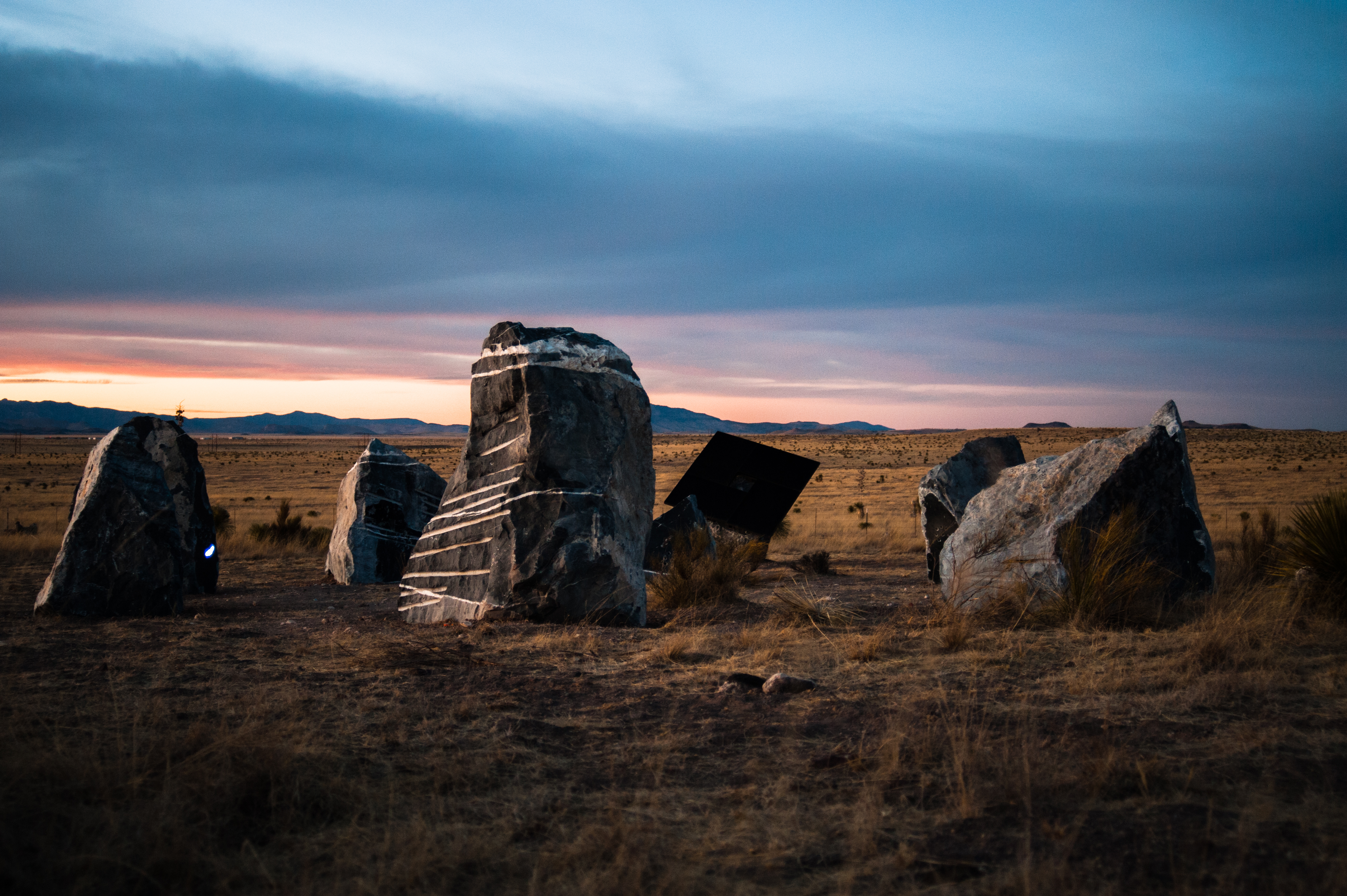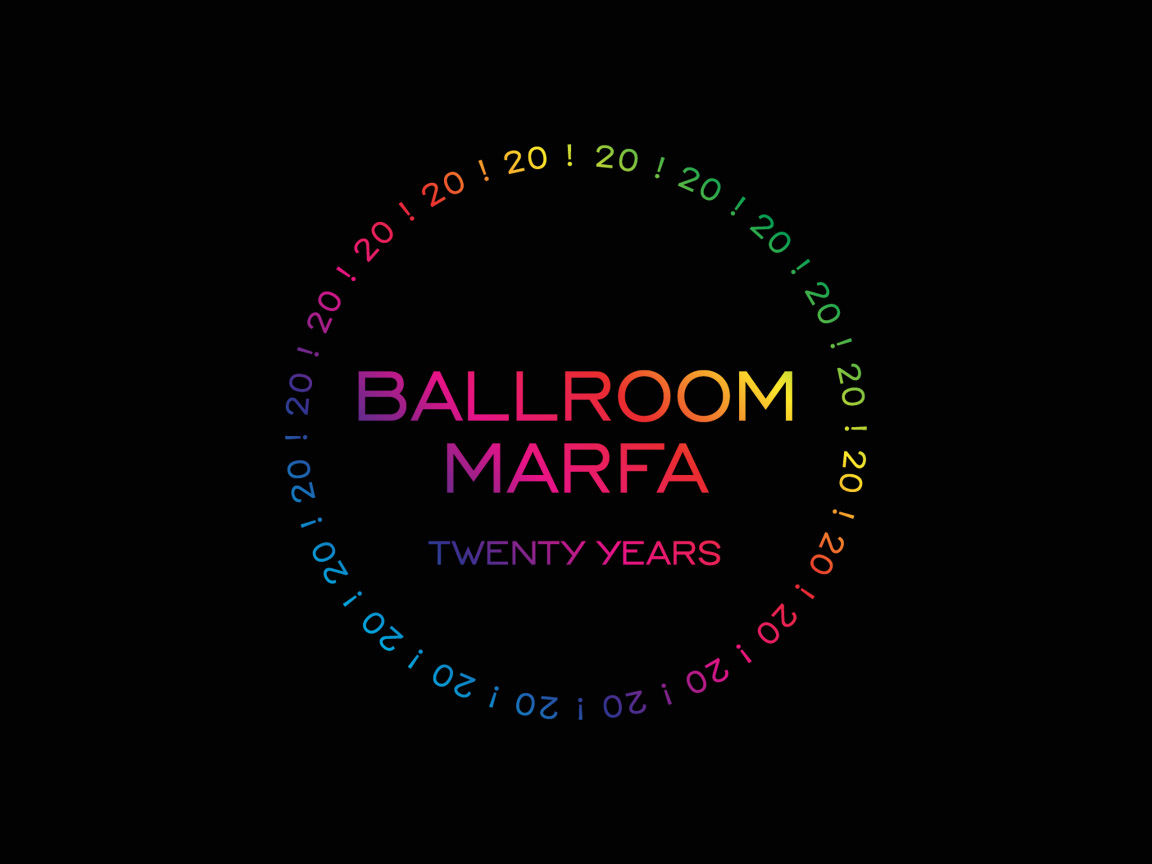Making the World Strange Through Opera: An Introduction to Vidas Perfectas
1 Jul 2014
Before the Texas/Mexico premieres of Vidas Perfectas – an all new Spanish-language version of Robert Ashley’s Perfect Lives – in El Paso, Ciudad Juárez, and Marfa, we wanted to present you with a quick primer on some of the important aspects of the piece. The new work, directed by Alex Waterman, has been in development since 2009 and replaces not only the language but the location of the original work, moving from the American Midwest to the Far West Texas desert.
Vidas Perfectas is presented by Ballroom Marfa in conjunction with the El Paso Opera, Whitney Museum of American Art, ISSUE Project Room and Irondale Brooklyn.
Vidas is the realization of years of hard work, rehearsal, and research by the cast and crew, and will be an exciting tribute to Ashley, who passed away earlier this year.
Waterman, who is a founding member of the Plus Minus Ensemble and performs with the Either/Or Ensemble, has been engaging with Ashley and his work for over a decade. He is currently co-writing a book on the composer’s notational scores entitled Robert Ashley: Yes, But is it Edible? and working on his PhD in musicology.
Vidas Perfectas will premiere in El Paso on July 12 and then move to Juaréz (July 13) and Marfa (July 18-19). All the details are on the Vidas Perfectas page.
Who was Robert Ashley?
Robert Ashley (b. March 28, 1930, d. March 3, 2014) was a prolific and groundbreaking American composer, known primarily for his contributions to American opera. His theatrical works are notable because of their focus on the music and rhythm inherent in our own vernacular speech and language, as well as for his use of collaboration and improvisation in constructing the piece.
Although Ashley’s father was a musician, he grew up in rural Michigan and was not exposed to many new forms of music as a child. It was not until many years later, after serving in the Army, that he met like-minded artists, performers, and musicians when he returned to the Midwest and was living in Ann Arbor. Those he encountered introduced him to new and avant-garde forms of theatre, art, and music, with a particular focus on new methods used in contemporary theater and performance art such as improvisation and collaboration. Ashley was also working at the University of Michigan at the time, researching speech, acoustics, and architecture all of which would play an important role in his future productions.
In 1961, Ashley co-founded the ONCE Group and helped produce the ONCE Festivals in Ann Arbor until the group dissolved in 1969. ONCE was extremely influential in helping Ashley hone his interests and allowed him to experiment and create new works in a nurturing and dynamic atmosphere, all the while being surrounded and visited by some of the most exciting, influential, and groundbreaking artists of the time such as John Cage, Merce Cunningham, Karlheinz Stockhausen, Robert Rauschenberg, Gordon Mumma, and Milton Cohen. As Arthur J.Sabatini writes in Robert Ashley: Defining American Opera: “For Ashley, the orchestration of voices, movement, timing, and use of sound technologies, made the pieces musical even as they looked like theatre or performance art. Working with the ensemble became momentous for him and focused his explorations of speech, music, and sound in relation to theatricality and the social act of performance.” All of these ideas and interests would be integral to his future work.
In 1976, Ashley directed and produced Music with Roots in the Aether: a television opera. The fourteen-hour work includes interviews between Ashley and various composers, such as Philip Glass, Gordon Mumma, and Terry Riley. Each conversation is set in specific non-traditional locations including a football field and a ranch in a California. In addition to the discussions each “episode” contained an hour-long performance of each composer’s work. Although Aether is often described as a documentary, Sabatini argues that Ashley called the work an opera “in order to emphasize how talk possesses its own musicality and, when set in a given landscape, followed by music, a rudimentary form of opera emerges.” Sabatini goes on to say that Aether “raises intriguing questions about what, removed from European influences, qualifies as opera in a media age.” A question, which directly applies to Ashley’s later works, particularly Perfect Lives.
What is Perfect Lives?
In 1980, the Kitchen, a non-profit performance space in New York City, commissioned Perfect Lives, an opera in seven parts. The three-and-a-half hour work aired for the first time on Channel 4 in Great Britain, running in 25 minute sections.
The plot involves a bank heist, a wedding, and various interactions between townspeople, including the local bartender and his wife; the captain of the football team; his “beautiful sister”; and their parents, Will and Ida. Each episode takes place in different locations across town, allowing us to see the various hubs where people congregate and how the characters’ behaviors change in each space.
Just as Aether had been a non-conventional opera, so too was Perfect Lives. Ashley had felt “alienated” from European musical traditions, writes Arthur J. Sabatini in PAJ: A Journal of Performance and Art. Though Broadway musicals were closer to his interests in their emphasis on narrative and use of vernacular, “the music, however, was not consequential enough for someone fascinated with electronic sounds, post-war musical theorizing, and America’s emerging world of avant-garde performance.” As a result, Ashley created works that were operas in title alone. His projects were so different from any existing genre, that he was forced to adopt the category, and thus transformed what an “opera” could be.
Perfect Lives was unlike any opera that had been written, but also unlike anything that had ever aired on television. Paul Grimstad describes it in n+1 as “stumbling onto an afternoon network TV show, perhaps a soap opera, where all the visual and sonic semaphores seem familiarly packaged, which then slowly turns before your eye into a pirate cable station broadcasting something ‘defiantly weird’.”
Tuning into Perfect Lives, the viewer would immediately be greeted by electronic noise, synthesized sounds, and Ashley’s “gentle half-sung Midwestern patter.” They would see flashes of corn fields, the keyboard, and selected words and phrases from the libretto, spliced with images of Ashley and the other performers, as well as glinting sequins and neon lights. All the while, we hear, in Grimstad’s words:
an ongoing piano performance by his [Ashley’s] main collaborator “Blue” Gene Tyranny. The piano-playing is often virtuosic, jumping from ornate romantic extravagance to minimalist pulse; to atonal clusters, boogie-woogie and blues, whirling “flight of the Bumble Bee” riffs; to Elton John-style hamming it up at the end of “Bennie and the Jets”- all in the course of a slow pan across a motel room or a corn field, often across the keyboard itself. Ashley layers the sound of the acoustic piano (beautifully recorded, it ought to be said) with his own spoken narration, splashes of electronics, and the occasional found artifact: old radio ads, clattering percussion, stray location noise.
The effect can be a bit overwhelming at first, exacerbated by the fact that the roles of the performers on stage are somewhat fluid and occasionally shift from scene to scene since, as Ashley told director Alex Waterman in an interview for Bomb, “They’re not acting. They’re just representing the characters onstage.” As the work progresses, however, one is pulled in, buoyed along by the music: its soothing rhythm and the poetry of the speech so easy to become tangled within.
It is not only Ashley’s music which carries us. The viewer is constantly shown shots of motion: moving down a highway past cornfields, watching couples walk through a park, pushing a shopping cart down the aisle of the supermarket. We are physically moved through spaces, much more interactive than a simple scene change. These settings are characters as important as the ones played by the performers. Although they are so familiar they are changed by the music. As Ashley told Waterman, once again in Bomb, “It is a familiar world, but because it has been made strange through opera, you look twice at what would otherwise be considered ordinary and realize that it contains mysteries that you’d never noticed before. Perfect Lives is something that you know, but you have to be reminded that you know it.” Ashley is fascinated by the ordinary and the familiar: the country he called home, its history, the people’s phrases and vernacular, and the everyday spaces they inhabit and gather: the landscape.
It is Ashley’s interest in landscape that led him to television, for just as he had to create a new form of opera, so too did he have to find a new landscape for his work. As he explains to Waterman,
What distinguishes traditional opera from any other form of narrative – like religious dramas, for example – is that most operas have a political landscape… I thought about that when contemplating the architecture of the opera house and how it makes those landscapes possible. Of course, that architecture is not available to me, nor would I want it to be. But the landscape has to be there however the opera is presented.
In the best circumstances, the architecture and the music – for the people – match. But what’s happened in the last 50 to 100 years is that the music has outgrown the architecture. The instruments are old, the ideas are old- everything’s so old; it’s boring, you know? There is no architecture to deal with what we’re talking about here. I thought, there’s got to be one. And it occurred to me that our architecture might be the imaginary space behind the surface of the television screen.
What is Vidas Perfectas?
Although Vidas Perfectas is sometimes described as a “restaging” of Perfect Lives, it is more like an entirely new piece. Because Perfect Lives does not have a score or urtext and relies so heavily on the musicians use of improvisation, Waterman argues in Bomb that there is “no final version of Perfect Lives.” He explains that he is starting from the beginning, since he has to “use the social relations that were involved in making the music as the model for its remaking. Singing or speaking in time, the musicians are creating the music together out of their interpretation of the characters that they are playing. In the case of the piano part, for example, the “notes” are created by interpreting who Buddy is… Improvisation and conversation are the primary tools when approaching this kind of music making. You can’t just sit down and read music. Harmonies, rhythms, and all kinds of new layers are created with the particular voices and talents that the band brings to the storytelling.”
This emphasis on improvisation is why every performance of Perfect Lives, and now Vidas Perfectas, is considered a new work; it is never the same show. Even the version airing on television is not simply a documentation of one performance but rather moments from a number of live shows, only adding to the work’s dream-like quality.
In addition to the lack of traditional structure dictating the course of each performance, the change of language also substantially alters the work. As noted previously, so much of Ashley’s work concentrates on not only what words he has composed, but how we actually speak and sound, including the various idioms, phrases, and accents that are unique to the various regions of America (in Perfect Lives it is the Midwest). Spanish not only sounds markedly different from English, but various ideas and vernacular unique to English get lost in the translation. Thus, Waterman could not simply translate the work directly and expect it to play out the same way, but had to work with Spanish-language experts to sculpt a text, which would not only capture the same meaning as Ashley’s original, but also the spirit of the words.
Finally, there is the location shift from the Midwest to Far West Texas. With most works of art this would be a small difference, however, because of Ashley’s emphasis on landscape, the change is as drastic as it would be for a family moving from one to the other. Ashley was decidedly devoted to creating American works of art, which examined American lives and history; and with Vidas Perfectas, Waterman is not shifting that focus, but rather re-working Ashley’s “perfect” piece into something more complete by concentrating on people and experiences that may have been overlooked previously. As Ashley says, “Spanish is the second language of America.





